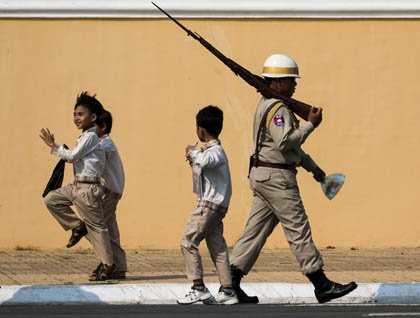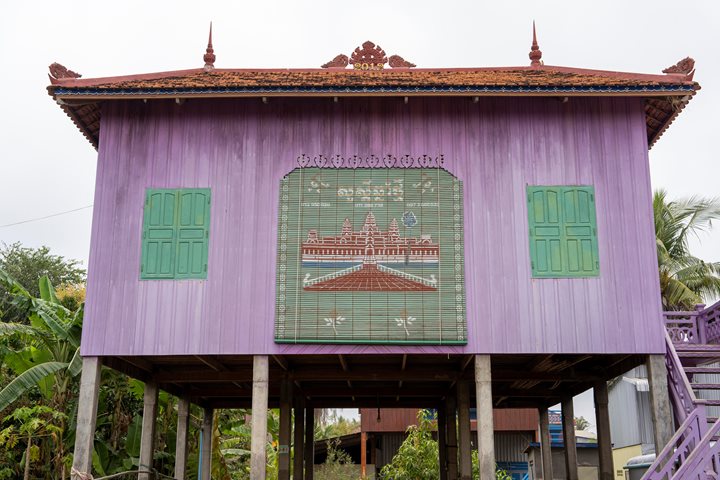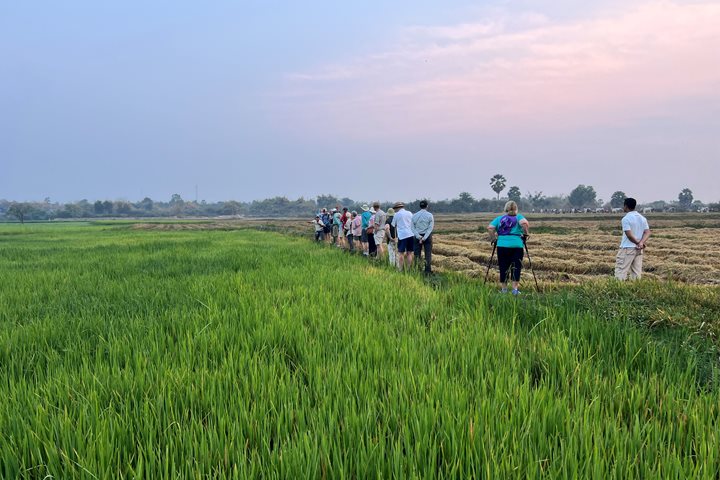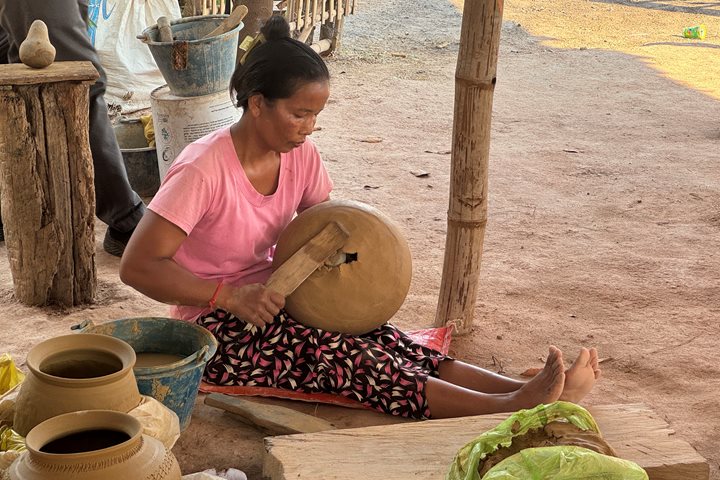At around 6:30 a.m., in the delightful light of the rising sun, we raise anchor and sail from our overnight anchorage in Chaktomuk (the confluence of the Mekong, Tonle Sap and Tonle Bassac) to Phnom Penh's riverfront. There, we moor our ship Jahan to its older sister, Jayavarman, to easily access the docks and start exploring the capital city of Cambodia.
On the riverfront, an army of cyclos is awaiting! These pedal-powered local transports are an ideal way to navigate the traffic while being close to the action. From the quay, we cycle past the Post Office to the sacred hill of Wat Phnom which, according to the legend, is the foundation place of the city in the 14th Century. Soon after, we pass in front of the heavily fortified embassy of the United States before circling the yellow, futuristic central market with its art deco architecture from the 1930s. We then return to the riverfront and finish our adventurous ride in front of the Royal Palace of Cambodia. We arrive just in time to assist to the change of the guard, under the giggles of visiting schoolchildren.
The Royal Palace was established in 1866 under King Norodom and the French protectorate. Beyond the yellow walls protecting the royal family's privacy, ceremonial halls, meeting rooms, funeral stupas and the King's quarters are dispersed in beautiful gardens. Mr. Rithy and Mr. Ponleu, our Cambodian guides, bring us to the various venues while providing insights on the history of the Kingdom, the ancient rituals and current diplomatic protocols. Our visit of the royal palace wouldn't be complete without a peak at the Silver Pagoda, with its floor made of 5,329 tiles of handcrafted silver and an emerald statue of Buddha.
Just north of the palace, the National Museum is a distinctive rust-red building sitting right next to the Royal University of Fine Arts. Artefacts and statues depicting Hindu gods, Buddhas and Kings venerated from the 6th to the 19th Century shed a new light on Cambodia's early history.
After an exquisite lunch at Topaze, the best French-inspired restaurants in the capital, our transports bring us to Tuol Sleng Genocide Museum. From April 1975 to January 1979, the infamous Khmer Rouge regime was responsible for the death of up to two millions Cambodians. Before being converted into the Genocide Museum S-21 was a secret interrogation facility installed in a former school. Submitted to torture and daily abuses, more than 17,000 inmates confessed to crimes they never committed, before being sent to Choeung Ek's killing fields for a summary execution. Only seven of the inmates who went through S-21 survived their ordeal.
To end an intense day filled ancient and tragic recent history, our evening was dedicated to a more joyful part of Cambodia's culture, Khmer Traditional dances! After a nice open-air barbecue dinner on the deck, a troop of young dancers demonstrated the delicate moves of Apsara and folk dances, to the sound of live Khmer classical music.
After the performance, Adam and I brought some of us to a special course on nighttime photography. We hop on taxi-remorques, also called tuk-tuks, and head to the Royal Palace and the River Front to learn about long exposure, starbursts and traffic trails. The results of our photographic experimentations will be shared with our peers tomorrow during our travel to the town of Kampong Chhnang.







